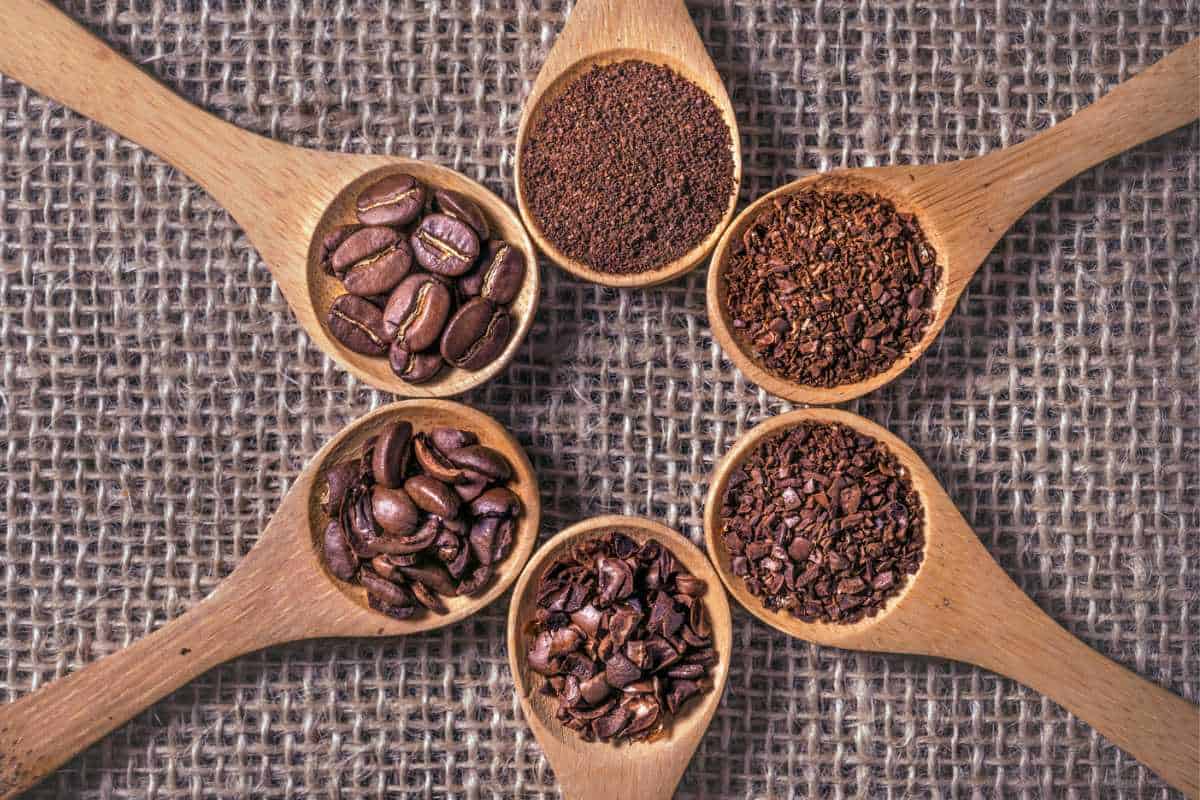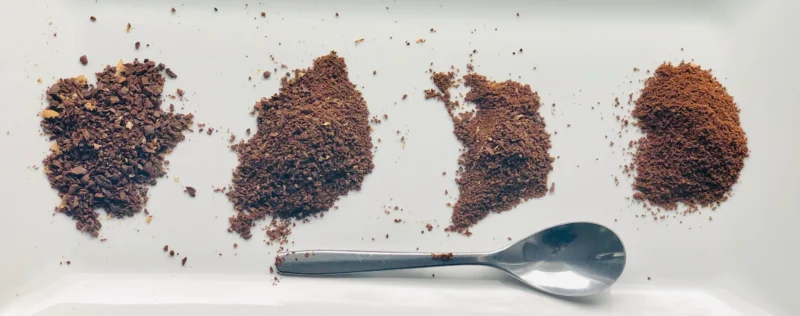Do you ever find yourself craving a freshly brewed cup of coffee in the morning, only to discover that you’re out of ground coffee? Fear not! We have an incredible solution that might just change the way you approach your morning routine; Using a food processor to grind your coffee beans.
In this article, we will explore the art of coffee grinding, the science behind it, and how you can unleash the power of your food processor to achieve the perfect grind. Get ready for a game-changing coffee grinding method that is both convenient and potentially cost-saving!
The Science of Coffee Grinding
Before we delve into the wonders of using a food processor, let’s understand the significance of grinding coffee beans. Coffee beans are packed with flavor compounds that are released during the brewing process.
Grinding the beans increases the surface area, allowing for greater extraction of these compounds and enhancing the flavor of your coffee. Moreover, the size of the grind impacts the extraction process itself. Finer grinds are suited for methods like espresso, while coarser grinds are better for pour-over or French press brewing.
Unleashing the Power of Your Food Processor

Now, let’s consider the untapped potential of your food processor when it comes to coffee grinding.
Traditionally used for tasks like chopping, shredding, and pureeing, it can be an unconventional yet highly effective tool for grinding coffee beans. The best part? It’s likely that you already have one sitting in your kitchen, waiting to be utilized in this new and exciting way.
Why invest in a separate coffee grinder when you can make use of a versatile appliance you already own?
Selecting the Right Kitchen Appliance for the Job
When it comes to grinding coffee beans, the quality of your food processor matters. Look for a model with a powerful motor, as grinding coffee beans requires a considerable amount of energy.
A sturdy blade and a spacious bowl are also important factors to consider. Opt for one that is specifically designed for heavy-duty tasks, as it will provide better results and ensure a longer lifespan for your appliance.
Step-by-Step Guide
Now that you have the right food processor, let’s dive into the step-by-step process of grinding coffee beans. Follow these simple instructions to achieve a consistent grind every time:
- Start by measuring the desired amount of coffee beans based on your brewing method. It’s recommended to grind only what you need for immediate use to preserve freshness.
- Place the coffee beans into the device’s bowl. Be mindful not to overcrowd the bowl, as it can affect the grind consistency.
- Secure the lid tightly and make sure the food processor is properly assembled.
- Pulse the food processor in short bursts to break down the coffee beans. Avoid continuous grinding, as it may lead to overheating and affect the flavor.
- Check the grind consistency after each pulse. Continue pulsing until you achieve the desired grind size.
- Once you’re satisfied with the grind, carefully remove the lid and transfer the ground coffee to an airtight container for storage.
- Clean your device thoroughly to remove any coffee residue, ensuring it’s ready for future use.
The Advantages of Grinding Coffee Beans in a Food Processor

Using a food processor for coffee grinding offers several advantages. Firstly, it is a cost-effective alternative to dedicated coffee grinders, saving you both money and counter space. Additionally, the multitasking abilities of a food processor allow you to explore a variety of recipes beyond coffee, making it a versatile addition to your kitchen arsenal.
Addressing Concerns: Does Grinding Coffee Beans in This Device Affect Flavor?
One common concern when it comes to grinding coffee beans is the potential impact on flavor. While it is true that using a food processor may introduce some subtle differences compared to specialized coffee grinders, there are ways to minimize any negative effects and still achieve a delicious cup of coffee.
It’s important to note that the flavor of your coffee is influenced by various factors, including the freshness of the beans, water quality, brewing method, and extraction time. While a dedicated coffee grinder may offer more precise control over the grind size, a food processor can still produce satisfactory results if used correctly.
Here are some insights and tips to help you maximize flavor while coffee grinding:
- Grind Size Consistency: Aim for a consistent grind size by pulsing the food processor in short bursts rather than continuous grinding. This approach helps prevent overheating and ensures a more uniform grind, which promotes even extraction and a balanced flavor profile.
- Adjust Brewing Method: Keep in mind that different brewing methods require specific grind sizes. Experiment with the grind size produced by your device and adjust your brewing method accordingly. For example, if the grind is slightly finer than expected, you can try reducing the brewing time or adjusting the water-to-coffee ratio to maintain balance.
- Freshness Matters: To preserve the freshness of your coffee, grind only the amount you need for immediate consumption. Coffee beans start to lose their flavor shortly after grinding, so avoid grinding large batches in advance. Opt for whole beans and grind them just before brewing for the best flavor experience.
- Practice and Refine: Finding the ideal grind consistency and flavor balance may require some trial and error. Take notes of the grind size and brewing variables each time you make coffee, and make adjustments as needed. With practice, you’ll develop a better understanding of how to achieve your desired flavor profile.
Achieving the Perfect Grind: Tips for Consistency and Control

To achieve the perfect grind using your food processor, here are some expert tips:
- Grinding Time: The longer you grind, the finer the coffee particles will become. Adjust the grinding time in your food processor to achieve the desired grind size. Start with shorter pulses and gradually increase the time as needed.
- Texture Control: If you prefer a more uniform grind, you can gently shake or stir the beans between pulses. This helps ensure that all the beans come into contact with the blades for a consistent grind.
- Grind Size Calibration: To fine-tune the grind size produced by your food processor, compare it to a reference point. For example, if you have access to a burr grinder, grind a small amount of coffee in both the food processor and the burr grinder, and compare the results. This will help you understand the consistency of your food processor grind and make necessary adjustments.
- Brewing Method Recommendations: Different brewing methods require specific grind sizes. Here are some general recommendations for grind size based on popular brewing methods:
- Espresso: Fine grind, resembling powdered sugar.
- Pour-over and Drip Coffee: Medium grind, similar to granulated sugar.
- French Press and Cold Brew: Coarse grind, resembling coarse sea salt.
Remember, these recommendations are guidelines, and personal preference may vary. Feel free to experiment and adjust the grind size to achieve the flavor you enjoy most.
Conclusion
Grinding coffee beans in a food processor can be a game-changing method for coffee enthusiasts. It offers convenience, cost-effectiveness, and the potential to achieve a satisfactory grind for various brewing methods. By understanding the science behind coffee grinding, selecting the right food processor, following a step-by-step guide, and considering flavor and maintenance factors, you can unlock the full potential of your food processor for grinding coffee beans.
Remember, the key to achieving your desired flavor profile lies in experimentation and adjusting variables to suit your preferences. So, go ahead, give it a try, and enjoy the process of discovering your perfect cup of coffee using a food processor. Happy grinding!

